
The creative economy is larger than it’s ever been. According to Adobe’s Future of Creativity study, over 165 million creators joined the creator economy worldwide between 2020 and 2022. Of that number, over 34 million new creators in the United States alone entered the space. Monetization of your content in the creator economy can be scary. But it doesn’t have to be.
Monetizing your content in the creator economy is like making money in any business. You need to analyze the market, determine your niche, and look for opportunities. The number of spaces to create a job is vast.
Opportunities are everywhere, from TikTok to Instagram to YouTube and even Substack. Maybe you’ve already built a following but don’t know how to turn those eyes into cash.
It can be overwhelming, but we’re here to help. Welcome to Passionfruit’s ultimate cheat sheet for monetizing your creative content. Whether you want to start a TikTok shop, get paid on Patreon, or explore affiliate business, this is your guide. There’s money in those digital hills. Let’s look at how to mine it.
What Is the Creator Economy, and How Can You Monetize It?
To succeed in the creator economy, you must understand what it is and can be. Our article on the subject provides a detailed explanation. But the general thing to remember when you’re looking to monetize your content is the creative economy is an entire economy.
While we will cover social media, crowdfunding, and affiliate opportunities in this guide, those paths are simply scratching the surface. The creative economy contains multitudes.
You shouldn’t get discouraged if the paths below don’t open all the doors to financial freedom. To flourish, creators often rely on different social media platforms, crowdfunding, online stores, and brand deals. Monetization isn’t easy, so be kind to yourself as you learn.
Even if you use your social media following to draw eyes to your art, videos, or skills, it is vital to think outside the box. You don’t always have to be the center of attention to make a living as a creator. Here are a few ways creators should think about monetizing their skills outside of traditional social media.
- Pitch your editing skills to other YouTube creators by making a reel of your previous videos.
- Use your art Instagram as a jumping-off point to offer commissions to other creators designing merch or logos.
- Sell your art and photography at local farmer’s and art markets.
- Contact local businesses and offer to help them create content for their channels.
Remember, this guide is simply a door to walk through. The beauty of the creator economy is it has birth figures like Mr. Beast (252 million followers) and Sarah “Squirm” Sherman (a former gross-out artist and comedian now on SNL). There is no one way to draw eyes to your work. If one method doesn’t work for you, try another. The important thing is not to give up.

How To Monetize Your Work as a Content Creator
There are countless opportunities to monetize your creative content, but we’re doing to focus on the big three.
- Social Media Monetization
- Crowd Funding
- Affiliate Marketing
Successful creators have built empires utilizing these basic methods, but that doesn’t mean they aren’t hard work. Remember that building a following is the first step to monetizing your content. Many platforms don’t allow you to monetize your work until you reach a certain threshold of followers or engagement.
It’s easy to find yourself trying to monetize your content before you have an audience to justify it. Survival is important, but so is authenticity. In the early days of YouTube, you could get eyes simply by uploading content. The first YouTube video is a 00:19-second clip of one of the site’s founders at the Zoo. It has 318 million views.
Today, even channels with hundreds of thousands of followers fight the algorithm to get their content seen. You can burn yourself out thinking you’re a failure because you can’t immediately monetize your content.
Making a career from your art is a long journey, not a short sprint. Set goals for yourself, and keep track of the milestones you reach. Don’t put out weak content chasing a quick buck. It took Mr. Beast 13 years to become the biggest name on the planet. Give yourself some grace and buckle down for the long game.
1) Social Media Monetization From TikTok to Twitch

Social media is where most creators first think about monetizing their content. Seeing your favorite channels and creators find success is inspiring, after all. Like every other business, it’s important to remember that social media isn’t a monolith. What works on TikTok doesn’t always work on Instagram and certainly won’t work on YouTube.
Similarly, each of these platforms takes a dramatically different approach to monetization. The number of followers you need to get started changes from platform to platform. Each has its own rules and regulations. If you want to make a living, you’ll want to read the fine print.
How to Monetize TikTok
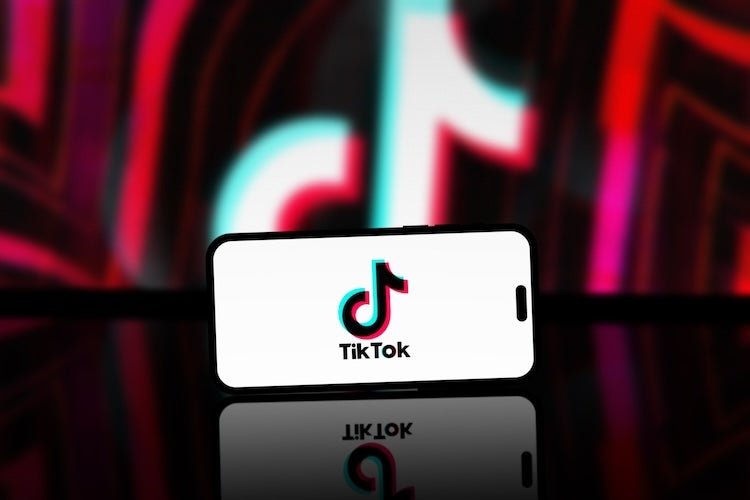
TikTok is today’s fastest-growing platform. A 2022 Statista report showed the platform saw a 100% user growth rate between 2020 and 2022. By 2024, it is estimated that TikTok will have over 2 billion users, even with the looming threat of a ban in the United States. One of the reasons for TikTok’s explosive growth is how easy it makes monetizing your content.
Users on TikTok have a wide range of options for monetizing your TikTok page. These paths include:
- TikTok’s Creativity Program
- Sponsored posts
- Affiliate marketing
- Virtual gifts
- Merchandise
- Advertising
However, before you can start to make money, you need a following that is big enough to justify it. TikTok regulates how creators access monetization tools through its Creativor Rewards Program. To be eligible, you need to meet specific criteria. These milestones include:
- You must be at least 18 years old
- Creators need at least 10,000 followers
- Your videos need at least 100,000 views in the last 30 days
- Finally, you need a U.S.-based account
Are You Ready to Monetize Your TikTok Content? Let’s Go Deeper Into Your Options
- How To Monetize TikTok From 1,000 to 50,000 Followers
- Everything You Need To Know About The TikTok Creator Marketplace
- How To Use TikTok’s Ad Manager
- Merch 101: How To Sell Stuff on the TikTok Shop
- How Much Did a Creator With 55,000 Followers Make In a Week on TikTok’s Creator Rewards Program
- As Told To: I’m a Finance Influencer Who Makes Money Posting Finance Tips on TikTok and Instagram
How to Monetize Instagram

With over 2 billion monthly active users, Instagram is still one of the biggest social media sites around. According to Statista, 80 percent of global marketers advertised their products and businesses on Instagram in 2023.
While India has over 360 million active users, the United States is a close second with 169 million users. That makes Instagram an incredible opportunity to monetize your content. Think of monetization as an extension of your existing content.
Instagram offers a range of options for monetization depending on what kind of content you make. They include:
- Offering subscriptions to your content
- Partnering with brands on the in-app creator marketplace
- Earning badges from your viewers on Instagram live
- Getting gifts from your viewers on Reels
- Run ads on your Reels
- Open an Instagram shop on your page
However, before you can start to earn, you need to meet the guidelines for Instagram’s various monetization tools.
Before You Can Offer Subscriptions, You Have To:
- Be at least 18 years old
- Have a professional (business or creator) Instagram account
- Have at least 10,000 followers
To Join the Instagram Creator Marketplace, You Must:
- Have a professional (business or creator) Instagram account
- reside in the U.S.
Before You Can Earn Money With Ads on Reels, You Have To:
- Be at least 18 years old
- Have a professional (business or creator) Instagram account
- Be located in the U.S.
- Be invited directly by Instagram to join
To Earn Money Through Gifts, You Must:
- Be at least 18 years old
- Have a professional (business or creator) Instagram account
- Have at least 500 followers (U.S. creators) or 1000 followers (non-U.S. creators in other eligible countries)
Before You Can Make Money With Badges, You Have To:
- Be at least 18 years old
- Have a professional (business or creator) Instagram account
- Have at least 10,000 followers
- Live in the U.S. or be invited by Instagram if you reside in another eligible country
Of course, those are simply the official ways to make money through Instagram. To understand all of your options, you should check out our guide to monetizing your Instagram. We cover everything from setting up a tip jar to affiliate marketing.
Are You Ready to Monetize Your Instagram Content? Let’s Go Deeper Into Your Options:
- As Told To: I’m a Finance Influencer Who Makes Money Posting Finance Tips on TikTok and Instagram
- How to Get Verified on Instagram
- How to Use Hashtags Effectively on Instagram
How to Monetize YouTube

YouTube has over 2.1 billion users worldwide and is the most popular online video site in America, according to Statista. That’s thanks to the sheer depth of content you can find there, from indie documentaries to game shows to old movies and reactor vlogs. YouTube is where a new generation of filmmakers and storytellers are making their living.
YouTube offers a host of options for monetizing your content. It’s smart to think about these things as you develop your voice on the platform. Here are the ways you can monetize your content on YouTube.
- Ad revenue from video streams
- YouTube Premium revenue from subscribers watching your videos
- Channel memberships
- Shopping links
- Super chat, super stickers, and super thanks during live streams
Before you can think about monetization of your YouTube, you need to join the YouTube Partner Program. First, you’ll need to meet its eligibility requirements:
- Live in a country that supports the partner program
- Have no active strikes against your channel due to violations of the Community Guidelines
- Sign up for an AdSense account
- Create content that can be monetized on YouTube
- A minimum of 500 subscribers
- Three public video uploads in the last 90 days
- A minimum of 3,000 hours of content viewed on your channel in the past year OR a minimum of 3 million views on your YouTube Shorts in the past 90 days
If you’re still looking for monetization basics for your YouTube content, check out our guide. Then, dive into our other YouTube guides.
Are You Ready to Monetize Your YouTube Content? Let’s Go Deeper Into Your Options:
- Maximizing YouTube Payouts: A Step-by-Step Guide for Creators
- 10 of the Top-Earning YouTubers of All-Time And What We Can Learn From Them
- How To Set Up Google Adsense Payouts For Your Website or Blog
- How to File Your Twitch and YouTube Taxes: A CPA’s Guide For Professional Streamers
How to Monetize OnlyFans
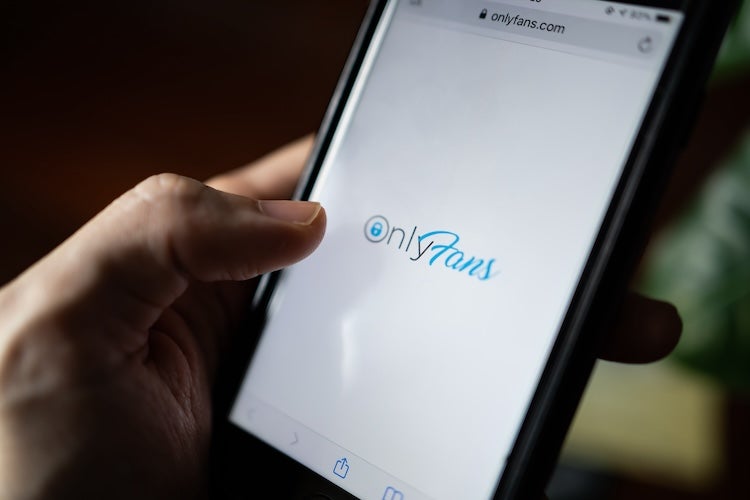
OnlyFans is a complicated topic for many people, largely due to the stigma surrounding adult content. However, controversy hasn’t stopped people from visiting in droves, with over 1.02 billion visits to the site in January 2024.
Its popularity exploded in 2020 with the COVID-19 pandemic, attracting celebrities and everyday creators alike. The monetization of OnlyFans can happen more quickly than on other platforms, but there are risks.
Creators on OnlyFans get a great deal of freedom. They set the rate for how much their page costs each month and can even advertise pay-per-view content directly to fans. How you use OnlyFans is up to you. Some users post explicit content, while others use it as a blog and modeling site. They’ve even expanded to showcase standup comedy.
It should come as no surprise that OnlyFans has strict requirements about who can sign up for the site.
To be eligible for OnlyFans, you need to meet the following requirements:
- You must be 18-years-old
- Users need to provide a valid government-issued ID
- The company will need your legal name, date of birth, and address
- Finally, you’ll need to provide your banking information
Our step-by-step guide for OnlyFans beginners provides more information about setting up your OnlyFans and beginning your journey.
Are You Ready to Monetize Your Onlyfans Content? Let’s Go Deeper Into Your Options:
- How To Get Your OnlyFans Payout As Soon As Possible
- How To Make Money On OnlyFans Without Showing Your Face, A Demure Guide
- How To Promote OnlyFans On Social Media Without Getting Banned
- Chargeback Prevention Strategies for Sex Workers: Minimizing Risk and Protecting Income
- Can Men Actually Make Money on OnlyFans?
How to Monetize Twitch
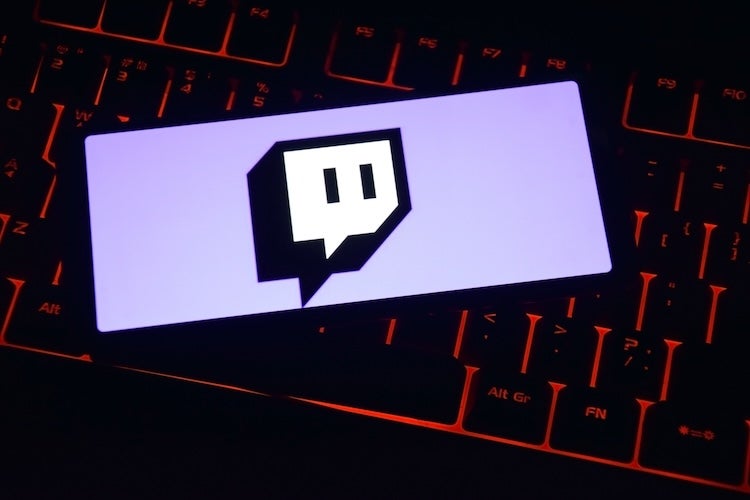
Whether you’re playing games or running your own live shows with original content, Twitch has a massive audience to capture. There are over 33 million Twitch users in the United States alone. For many creators, Twitch is a place people visit to watch streams of Fortnite. And, to be fair, that is still the most streamed game on Twitch.
However, Twitch offers more than just video game content for creators. It’s home to countless live shows, musical tutorials, commentary channels, and other original content. More importantly, it offers creators a ton of options for monetizing their Twitch stream content.
In fact, Twitch has started letting creators monetize their content far faster than many other social media platforms. Monetization mostly depends on how big your following is.
Here Are the Eligibility Requirements for Becoming a Twitch Affiliate:
- have a minimum of 50 followers
- stream for at least 8 hours in the past 30 days
- stream on at least 7 of the past 30 days
- have an average of 3 viewers in the past 30 days
Those are obtainable numbers for any creator with vision, a long-term plan, and a consistent posting schedule. You should consider the various methods Twitch allows its creators to monetize their content while you plan.
Here is how you can earn cash with your Twitch channel:
- Get viewers to pay for subscriptions to your channel
- Have viewers cheer your content with bits
- Run ads on your content
Many Twitch creators also find success by setting up a Patreon, taking direct donations, or selling their own merch. However, it’s important to note that Twitch can be a massive time commitment, with some of today’s top streamers being online hours per day.
To start read our guide for how to monetize your Twitch content right here.
Are You Ready to Monetize Your Twitch Content? Let’s Go Deeper Into Your Options:
- Twitch Payout: How to Get Paid
- How to Become a Twitch Affiliate
- Twitch Analytics and You: How to Understand Your Audience
- How to File Your Twitch and YouTube Taxes: A CPA’s Guide For Professional Streamers
2) How to Crowdfund Your Creative Life

One thing you’ll quickly notice about monetizing social media content is that you need followers. Each site sets its minimum number of followers required, which can lock out small creators. Perhaps you’re looking to fund a film or podcast or just want your existing fans to be able to donate to you.
Every crowdfunding site is different, with its quirks and features. But the important thing is they’re more accessible for creators of different sizes. Crowdfunding is less monetization of your content than it is monetization of people’s belief in your project.
Patreon
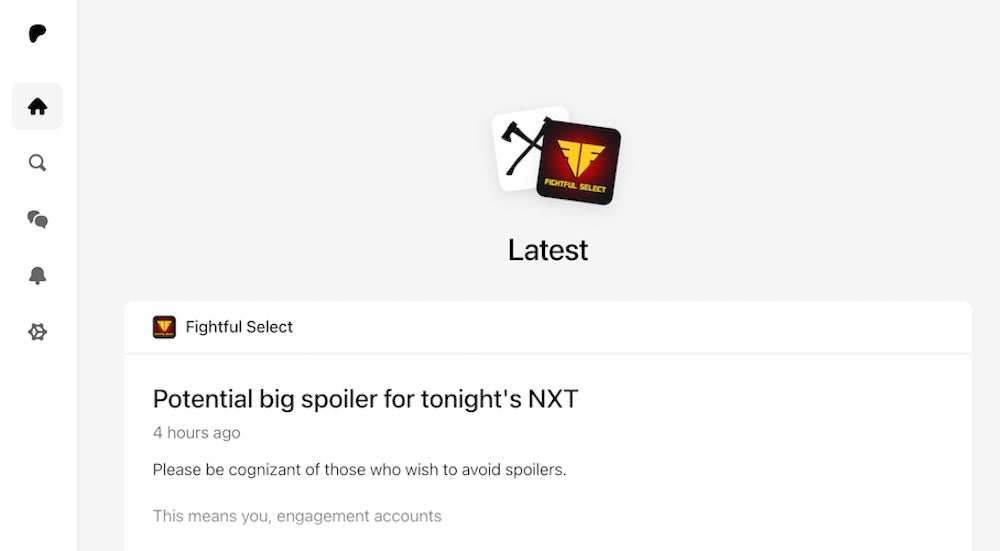
For creators who work a little slower than the constant hungering maw of social media’s algorithm allows, Patreon is a gift. Creators on Patreon can accept recurring donations from fans. Donations come in the form of a flat monthly fee or a charge whenever they post.
Patreon has exploded in popularity with podcasters and YouTubers as a way of controlling their monetization. If you find your videos regularly censored on YouTube, like the popular DeadMeat channel, Patreon can help.
Creators can post content there that might not fly on YouTube as a benefit for subscribers. Patreon has the largest market share in the crowdfunding space.
Ready to Monetize Your Content With Patreon? Dive Deeper Into Patreon With Our Guides:
- Everything You Ever Wanted To Know About Setting Up A Patreon
- Everything You Ever Wanted To Know About Patreon Tiers and Rewards
- How To Earn and Withdraw Money From Patreon
GoFundMe
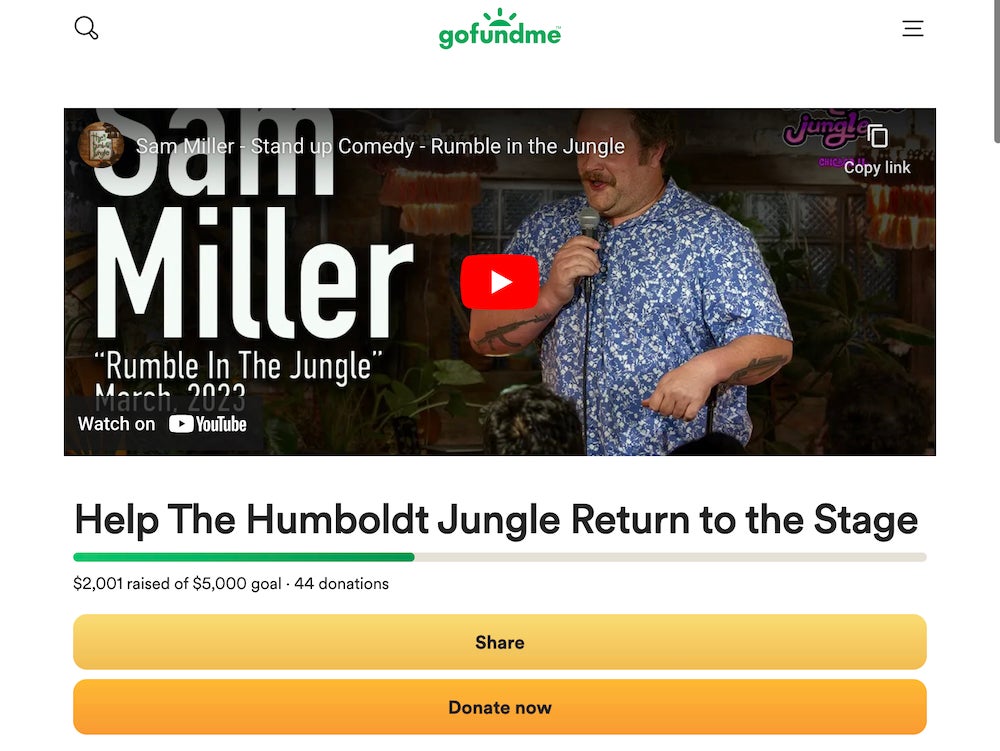
Unlike Patreon, which uses a subscription model for creators, GoFundMe is a traditional crowdfunding site. That means rather than getting money every month, you’ll use GoFundMe to create a one-time fundraiser. Creators tell their stories on GoFundMe to fund specific projects with a set final total.
Unlike other funding sites, GoFundMe has no reward system. People donate money to your project with no expectations beyond wanting to see it get made. GoFundMe campaigns also don’t have an end date.
You can keep a GoFundMe campaign going for as long as you need. However, you’ll need to continue promoting it over time if you want to keep earning.
Ready to Monetize Your Content With GoFundMe? Dive Deeper Into Gofundme With Our Guide:
Indiegogo

Think of Indiegogo as a much more specific version of GoFundMe, in that it only supports certain projects. Campaigns on Indiegogo need to fall into one of three categories:
- Tech & Innovation (Products)
- Creative Works (Art/Film/Media)
- Community Projects (Business/Culture)
While that might seem strange at first, it’s actually one of the best aspects of Indiegogo. The company has built an audience who checks the site simply to look at the projects. That’s because they know they won’t have to wade through personal fundraisers while browsing.
Indiegogo lets you set fixed or flexible funding. Under fixed funding, you only get your money if you reach your amount. With flexible funding, you get what’s donated even if you miss your goal.
Ready to Monetize Your Content With Indiegogo? Dive Deeper Into Indiegogo With Our Guide:
Kickstarter
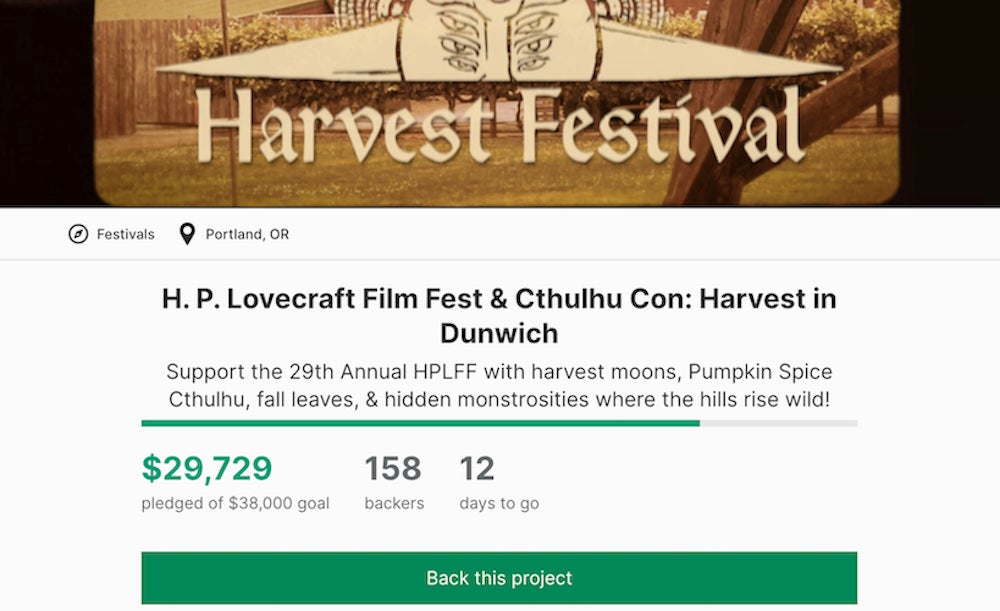
Founded in 2009, Kickstarter might not have been the first crowdfunding site, but it was the first to blow up. Kickstarter’s system is simple; you set a goal for a project. If it is fully funded, you get your money. You also need to be funding something that will be shared with consumers.
As an incentive for supporting your project, backers are offered tiers. These tiers can include anything from a thank you for supporting, a copy of your product, and dinner with you or a celeb.
Kickstarter also supports stretch goals. Stretch goals let you offer additional incentives to backers for reaching new funding levels.
Is Kickstarter right for you? Read our guide to find out.
Ready to monetize your content with Kickstarter? Dive deeper into Kickstarter with our guide:
Ko-Fi
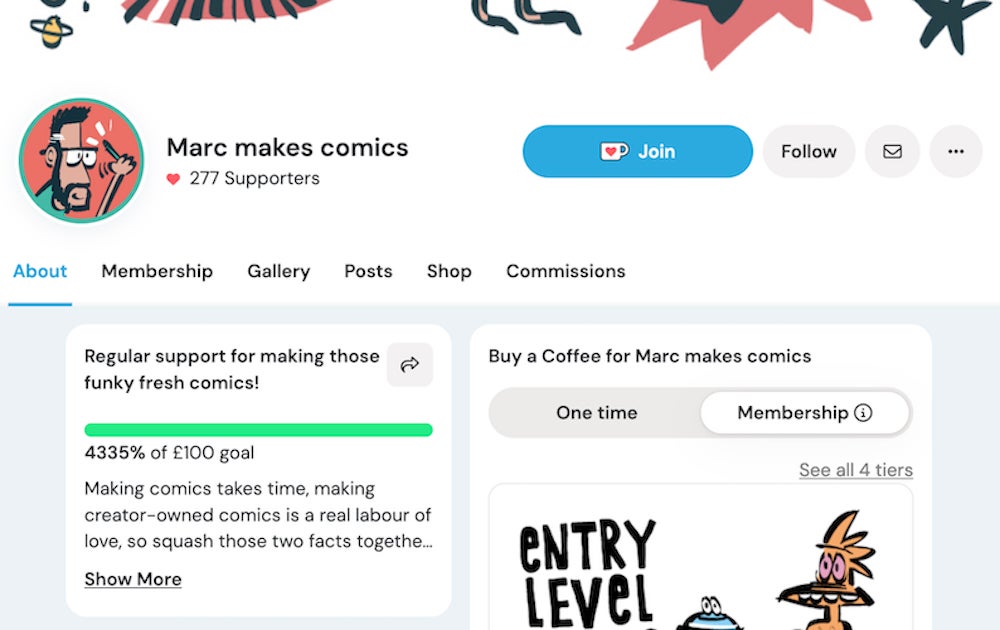
Ko-Fi is the tip jar of the internet. Using this app, you can create simple one-time or recurring income through digital tips from your fans. The site has expanded its services to include monthly donations, memberships, storefronts, and even commissions.
If you’re not ready for a full on crowdfunding campaign, Ko-Fi is an essential middle ground.
Ready to monetize your content with Ko-Fi? Dive deeper into Ko-Fi with our guide:
3) Using Affiliate Programs To Monetize Your Following

The final method of monetizing your social media following is called affiliate marketing. Affiliate marketing is when you share a link to a product and get a small percentage of the sale back as payment. Affiliate links help you with the monetization of products you’re already promoting.
If you’ve ever wondered why your favorite sites started linking to products on Amazon a few years ago, that was affiliate marketing. Creators can also take advantage of affiliate marketing options. The TikTok shop is one example of how you can market products and earn affiliate revenue through apps you already use.
Creators can also partner with major retailers and affiliate networks to make their own deals. However, it’s essential to make sure you fully read the rules for posting links to affiliate content on your favorite social media site. You don’t want to break the rules and accidentally end up having your account punished.
We also suggest reading about how other creators negotiate and manage their deals.
Here are some options for exploring influencer affiliate marketing.
Amazon Influencer Program

The Amazon Influencer Program allows creators to help sell products on social media. To be considered for this program, you’ll need an account on one of the following services:
- YouTube
- TikTok
Commissions for creators vary wildly, from 3% of the sale price to up to 20%. You can also get commission bonuses for some products. To learn more about the Amazon Influencer Program, read our guide here.
Walmart Creator Program
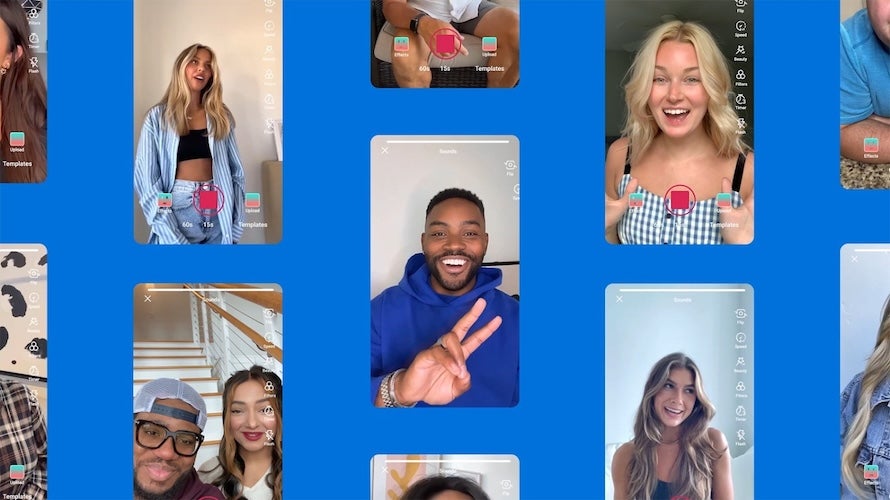
For creators looking to experiment with affiliates while growing their audience, Walmart’s Creator Program is attractive. It does not require creators have a specific number of followers to join, making it ideal for new creators.
The Walmart Creator Program works in two ways. One option offers creators a curated list of products they can get in exchange for posting.
The second works like a traditional affiliate program, with creators getting revenue from sales their links generate. To learn more about the Walmart Creator Program, read our guide here.
CJ Affiliate

When you’re ready for big clients, look to CJ Affiliate. CJ Affiliate is one of the leading affiliate networks for products in the world. Unlike Amazon or Walmart’s services, CJ doesn’t direct you to its own store. Instead, you make deals with companies through the CJ platform. Creators then post links to those companies on their content.
The sheer number of products that CJ offers is staggering, but it’s easily the most complicated option here. There’s more to it than simply posting a link to your favorite products on a familiar store.
However, for experienced creators looking to take the next step in affiliate marketing, CJ is a potentially profitable option. To learn more about CJ Affilaite, read our guide here.
This guide will be updated regularly to reflect new ways to earn money as a creator. We hope you see it as a small sampling of what is possible in monetizing your art.
Remember, even if you see yourself as a content creator first, you’re an artist. You deserve to be paid for your hard work, even if it takes some time to start making money.
Monetization should be a happy element of your work. Just remember, monetization isn’t everything. Focusing only on making money is a sure way to burn out.




